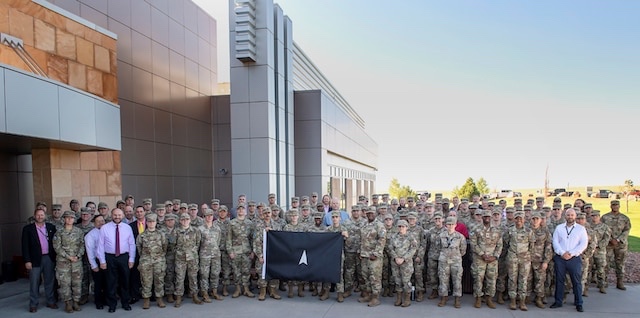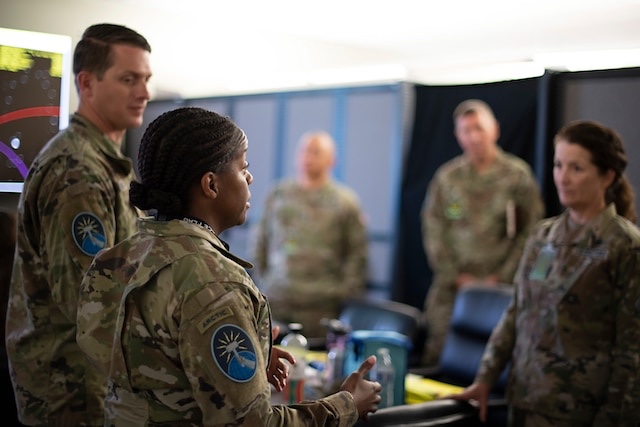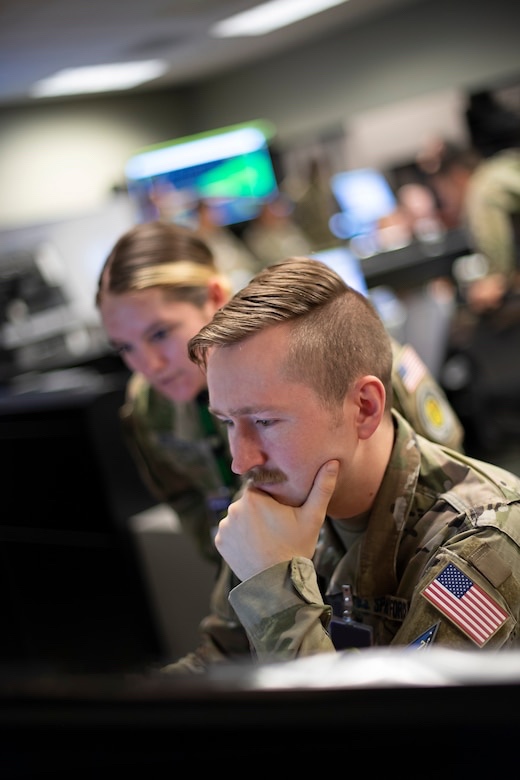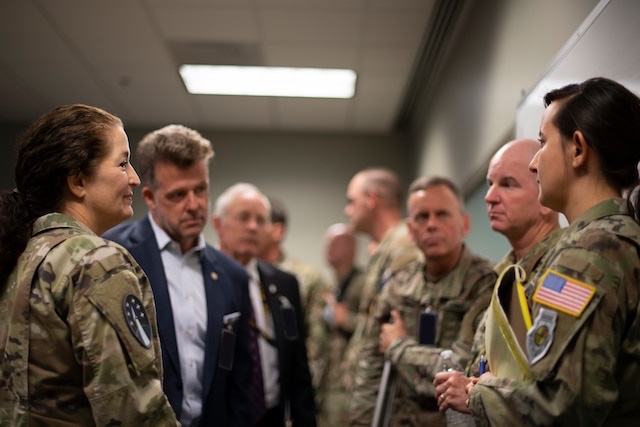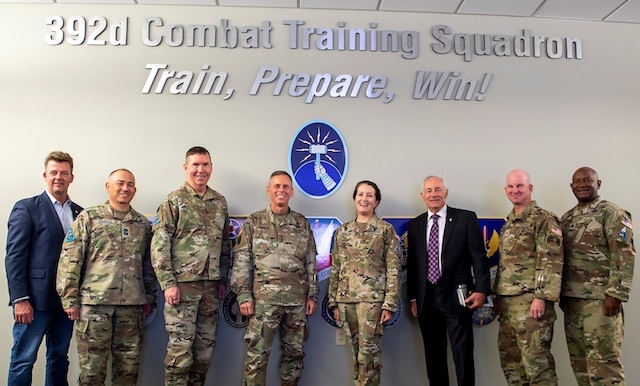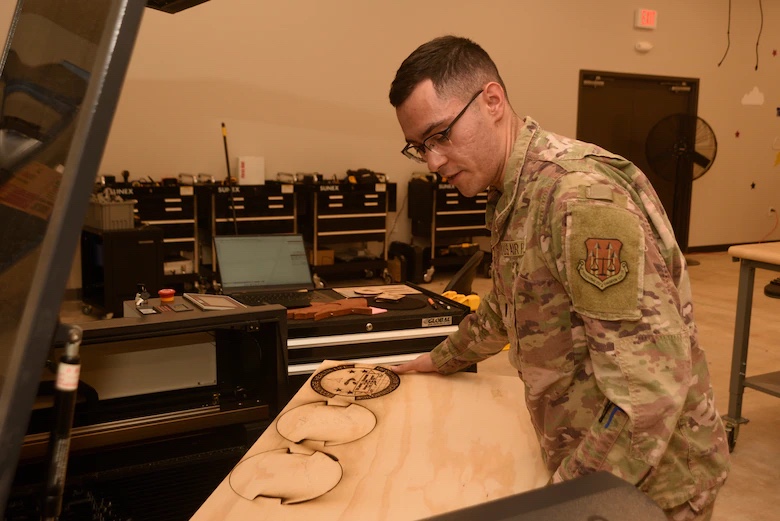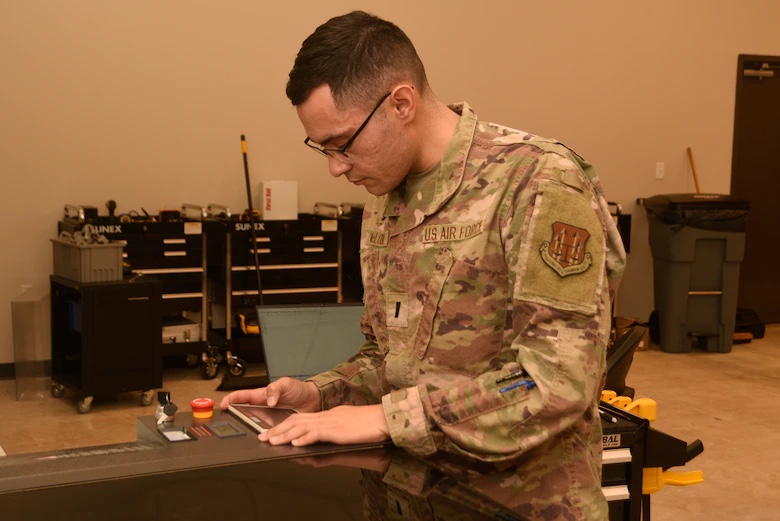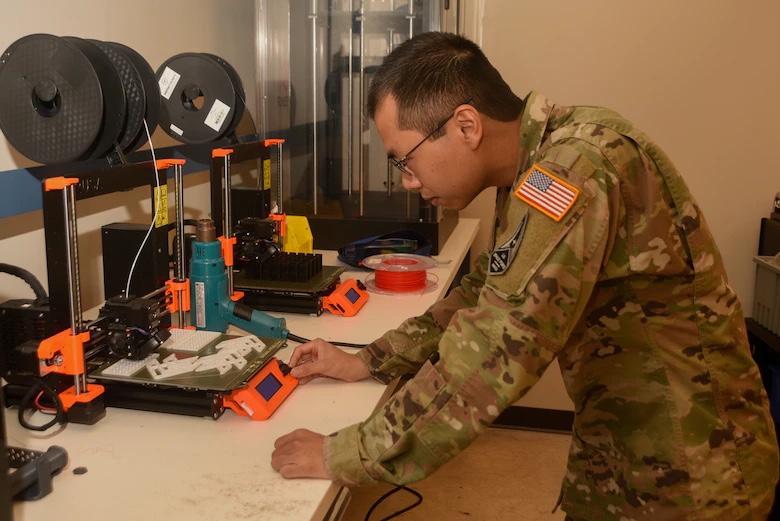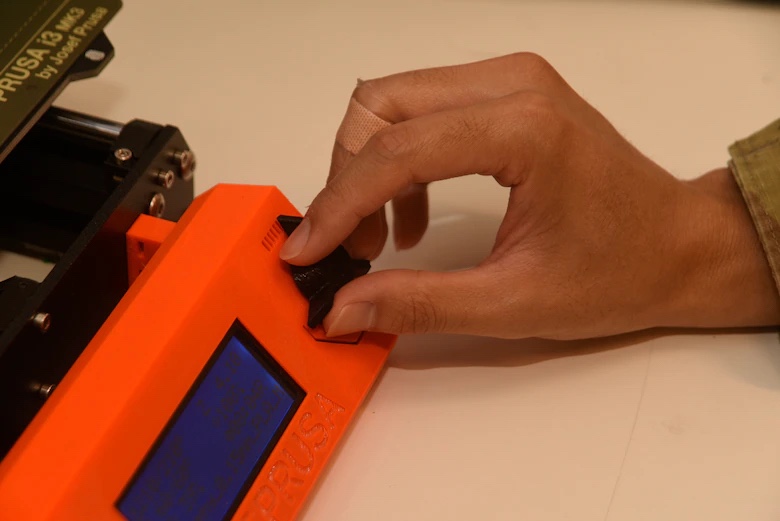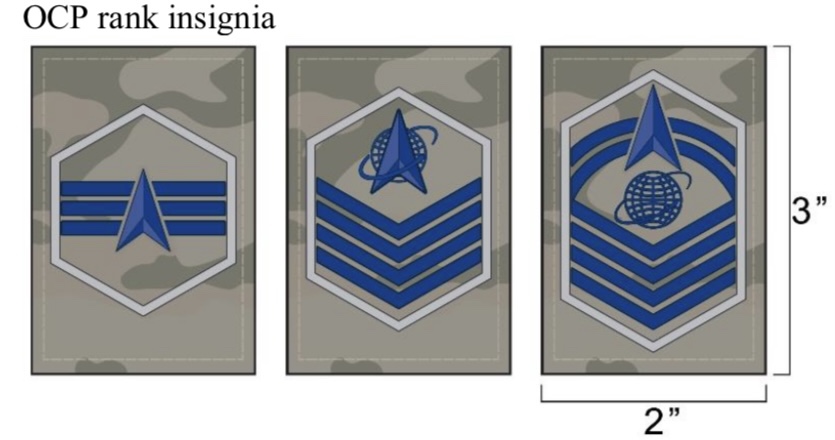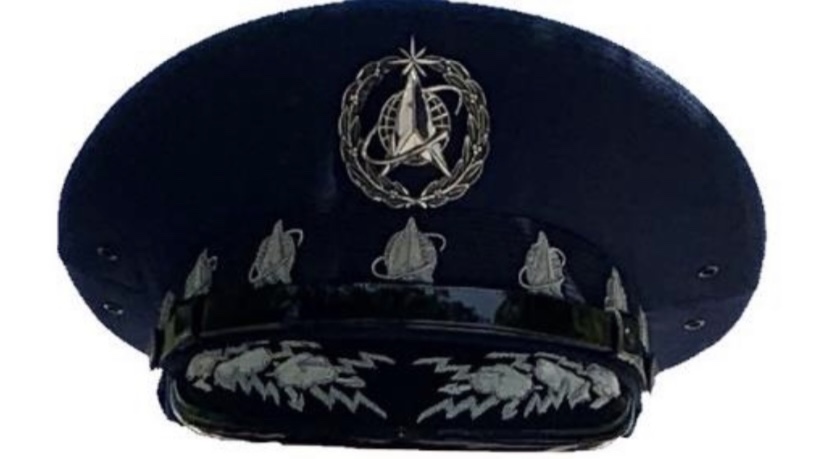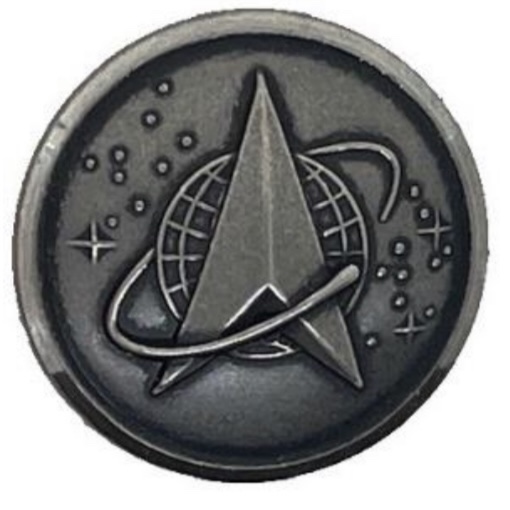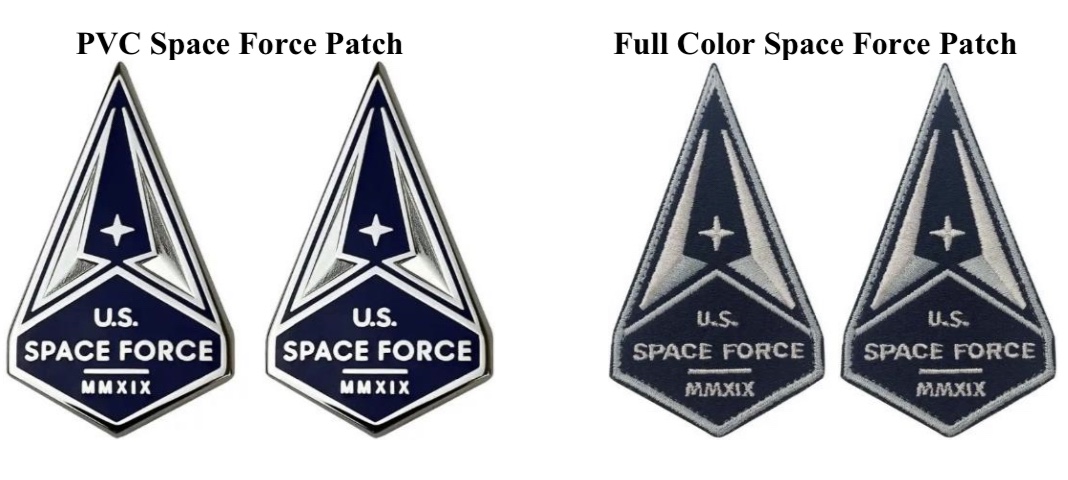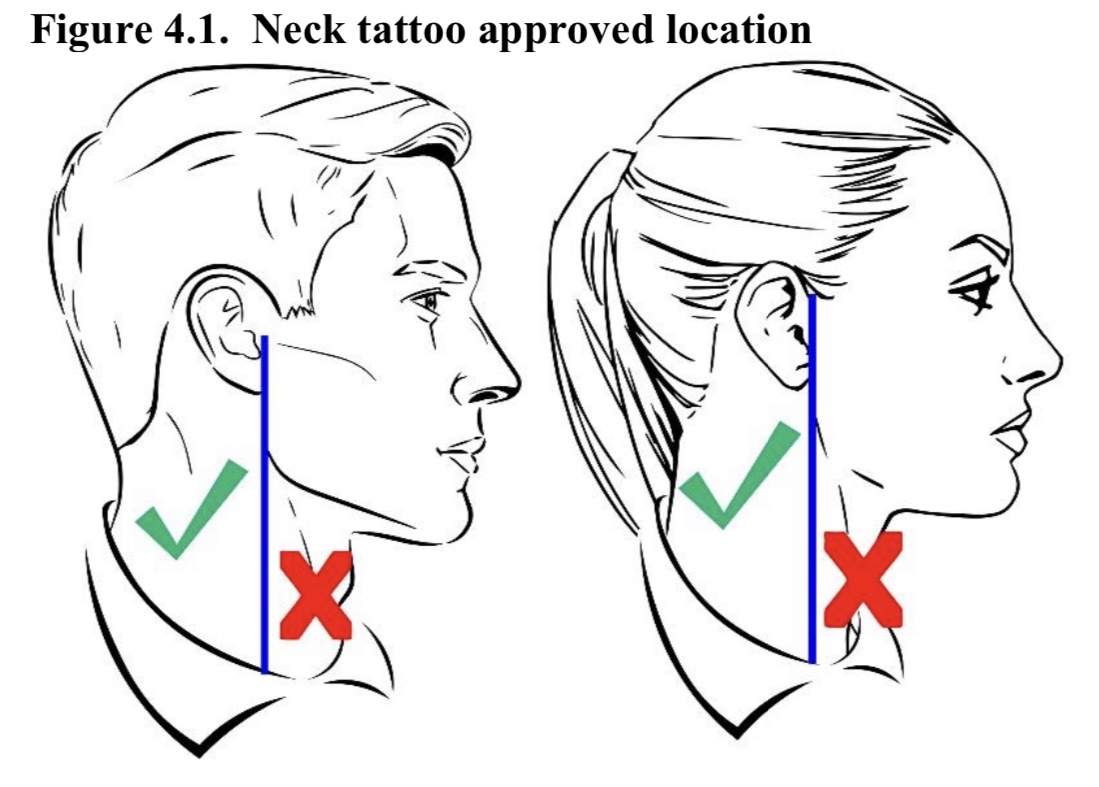Schriever Space Force Base, Colo. —
The Orbital Defense Initiation, or ODIN, is Space Delta 9’s initial training course where new members gain common knowledge on orbital mechanics, warfare principles, current threats to space assets and more.
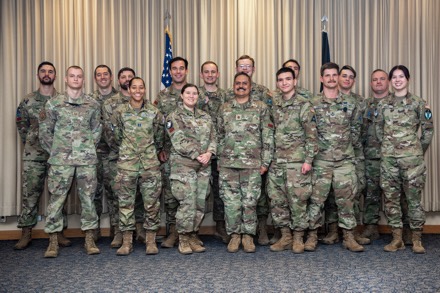
However, their most recent graduation included Guardians wearing patches other than DEL 9’s.
The three ODIN graduates from Space Delta 6’s 69th Cyber Squadron are part of a U.S. Space Force initiative to embed cyber and intel capabilities into space operations squadrons to speed up decision making and improve readiness. They will work side-by-side space operators and intelligence experts, providing cyber capability to operational missions.
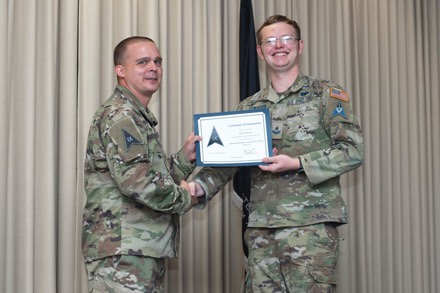
“It’s important for cyber operators to have the same fundamental orbital warfare knowledge base as the space operators. It allows them to better understand and react to the issues that space operators encounter every day,” said USSF Capt. Melanie Mohseni, ODIN deputy flight commander. “It’s also necessary to have cyber expertise on the operations floor so that when we encounter cyber issues, we have those subject matter experts helping the crew commander make decisions.”
The 69th CYS is one of several squadrons being formed from the 61st CYS and aligned under DEL 6 administratively.
“We exist to defend their terrain. The mission of 69 CYS is to enable the protect and defend mission of Delta 9 through active cyber defense,” said USSF Lt. Col. Shane Warren, 61st CYS commander.
Space operations involves around-the-clock missions, with operational squadrons continuously manned. This initiative puts the right expertise in the room instead of on-call. Cyber operators attending a delta’s initial training course ensures everyone can speak the same language.
“It helps our operators to know what normal looks like,” said Warren. “If they see indicators that something doesn’t look normal in the terrain they’re monitoring, because they’re trained and sitting side-by-side, they can determine if there is potentially malicious activity and what can we do to stop it.”
The knowledge sharing flows in both directions. The space operators are getting more in-depth cyber knowledge as well.
“The first thing I discussed with the three recent ODIN cyber grads was them helping us develop a Cyber curriculum,” said Mohseni.
Since the initiative is at the ground level, DEL 6 is allowing many Guardians the chance to have a voice in their assigned operational cyber squadron, numbered in the 60’s to match the delta they support, with the 69th CYS supporting DEL 9, the 68th CYS supporting DEL 8 and so on.
“We describe to the Guardians, ‘this is the Space Domain Awareness mission, this is the Electromagnetic Warfare mission, this is the SATCOM mission,’ and ask, ‘What interests you the most?’,” said Warren.
According to Warren, there are roughly 175 Guardians in the 61st Cyber Squadron, with a large portion assigned to active and future squadrons according to their own inputs.
This initiative is not just making space operations squadrons more capable, it is also providing force development for the future of the USSF.
“This is how we develop senior master sergeants in the Space Force. We’ve tried to go beyond ‘I’m cyber, you’re intel.’ In the Space Force, we all work on space,” said USSF Senior Master Sgt. Charles Presley, 69th CYS superintendent. “A superintendent for a Space Force squadron could come from any operational background, so it’s important to expose the next generation of enlisted leaders to all aspects of the space enterprise as early in their career as possible.”
As the USSF builds its culture and forges its own identity, Guardians in cyber are one step closer. They are a weapon system, practicing their craft to safeguard and enhance the space mission.
“You can see the spark in these Guardian’s eyes when they come in,” said Warren. “They’re definitely excited, and we’ve got some really talented Guardians.”
DEL 6 plans to have cyber squadrons embedded in other space deltas, expanding capabilities to more USSF missions, in the near future, eventually shaping a future where everybody is looking at the same problem through different lenses, tackling the same problem with different skillsets.
By Mike Slater, Space Base Delta 1 Public Affairs


